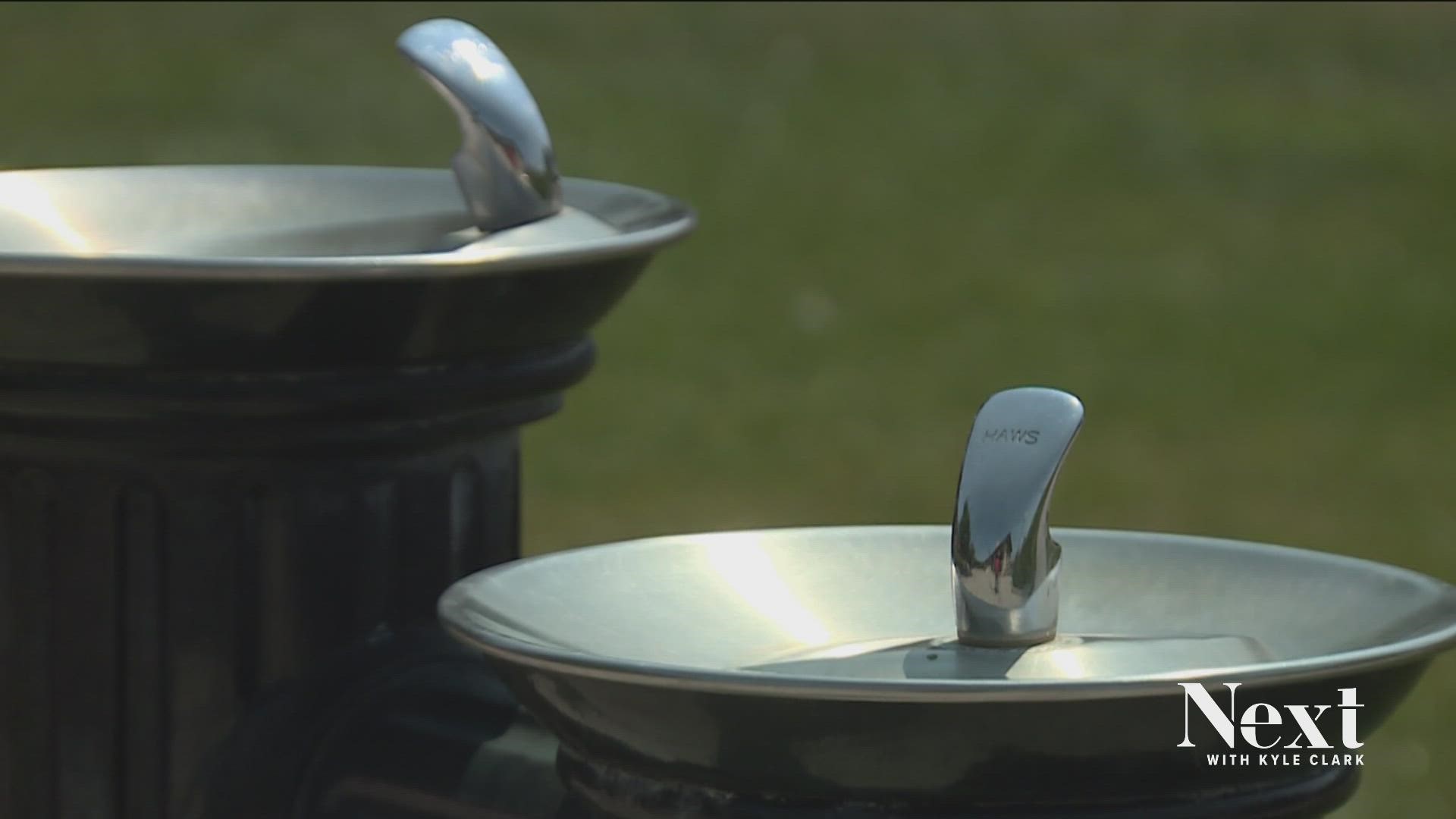DENVER — State lawmakers and Colorado's governor gave the green light for a new law that would require more than a thousand elementary schools and hundreds of childcare centers to test their water for lead.
The state previously worked to address this issue before but fell short. This time one of the bill sponsors and advocates said circumstances are different.
"It's as basic as taking a drink of water from the water fountain, said Alexandra Simon, "It's such an innocent act."
Simon, who advocated for the new state law, HB22-1358, said she realized it's not so simple to make sure the water her kid is drinking is lead-free.
"I honestly didn't realize it was such an issue and I have a 3-year-old that goes to daycare. He goes to drink from the water fountain - and I'm like let's just go home!" she said.
HB22-1358, just signed into law in June, requires around 1,100 elementary schools and around 450 childcare centers to do mandatory tests of their drinking water for lead.
"Most parents when I talked to them," said Simon, "They are surprised this is an issue."
The state started putting together a picture of the issue in part when 67 schools voluntarily started testing their water five years ago.
All of the schools found elevated lead levels, according to Democratic Representative Emily Sirota.
"Not all the fixtures but all the schools found elevated lead levels," she said.
Rep. Sirota was one of the bill sponsors this past legislative session. She said in the past the issue was there wasn't enough money to help all these schools fix the problem. Rep. Sirota said this time it's different because of a one-time infusion of state dollars and federal COVID relief funds to pay for both testing and fixes.
"This could be changing fixtures, a filter," said Rep. Sirota, "We leave that up to the facility and funding is provided for that remediation."
"What we found to be the norm is low levels of lead contamination in water or outdated standards that allow for more than the current recommendations," added Simon.
Both Sirota and Simon said the bill is a good first step but also acknowledged its limits since it will first focus on pre-K through 5th graders and childcare centers. The testing program would expand to middle and high school if there is money left over or additional funding secured.
As for regulatory limits, the Colorado Department of Public Health and Environment wrote:
"The regulatory limit for lead in drinking water is currently 15 parts per billion, which is compared to one single drop of paint in a 13,000-gallon swimming pool."
HB22-1358 requires action and funding for solutions for any sources that show lead levels above 5 parts per billion.
"The Academy of Pediatrics thinks 5 parts per billion is the highest level you should tolerate but any level is too high," said Dr. Reggie Washington with HealthOne. Dr. Washington said health effects can compound over time but that there are also therapies and treatments.
"Overtime lead can cause issues with learning abilities, irritability and other effects on your brain," said Dr. Washington, "I don't think people should panic but be aware this is a possibility."
CDPHE said the most common sources of lead is from plumbing materials.
"Water providers already test regularly for lead. Each public water provider is required to make this information available to their customers every year in a document called a 'Consumer Confidence Report'," according to CDPHE. "The most common source of lead in drinking water at schools is from the corrosion of plumbing materials that contain lead. Historically, lead was used in a variety of products including drinking water service lines and plumbing materials (such as solder, faucets, valves, and brass components. In 1986, and again in 2011, the Safe Drinking Water Act reduced the use of lead in pipes, solder, and other plumbing products to the extent feasible."
The state also added, "The division continues to implement the federal Lead and Copper Rule which requires testing and taking action if high lead levels are found. The Bipartisan Infrastructure Law (BIL) will provide funding to inventory lead service lines and remove them."
While advocates like Simon are worried that lead levels can ebb and flow, so testing might miss problem spots. Simon said the new law is a good first step forward.
There is work around lead testing already, including Denver Water replacing problem pipes.
CDPHE helps run an EPA testing program for schools and childcare facilities.
Some school districts have their own programs like Denver Public Schools (DPS).
"Since 2016, Denver Public Schools (DPS) and Denver Water have partnered in a proactive effort to sample drinking water in all DPS buildings to ensure it meets Environmental Protection Agency (EPA) guidelines for schools of under 20 parts per billion (ppb)," DPS said. "Our limit has been 10 ppb. We will make some adjustments to ensure that we are in compliance with HB22-1358 by May 31, 2023. Under our partnership, DPS Environmental Services collect the water samples and Denver Water tests those samples."
"Every school receives extensive lead testing of their water every 3 years; each year 1/3 of the facilities are tested," according to Jefferson County Schools. "This provides the district with an ability to monitor our more than 155 facilities’ water with a comprehensive, systematic approach."
Jefferson County Schools' results can be found here.
This means the state is hoping to reach smaller districts and childcare centers who may not have the funds to pay for testing and fixes, along with some exceptions for licensed childcare facilities in people's home.
SUGGESTED VIDEOS: Latest from 9NEWS

